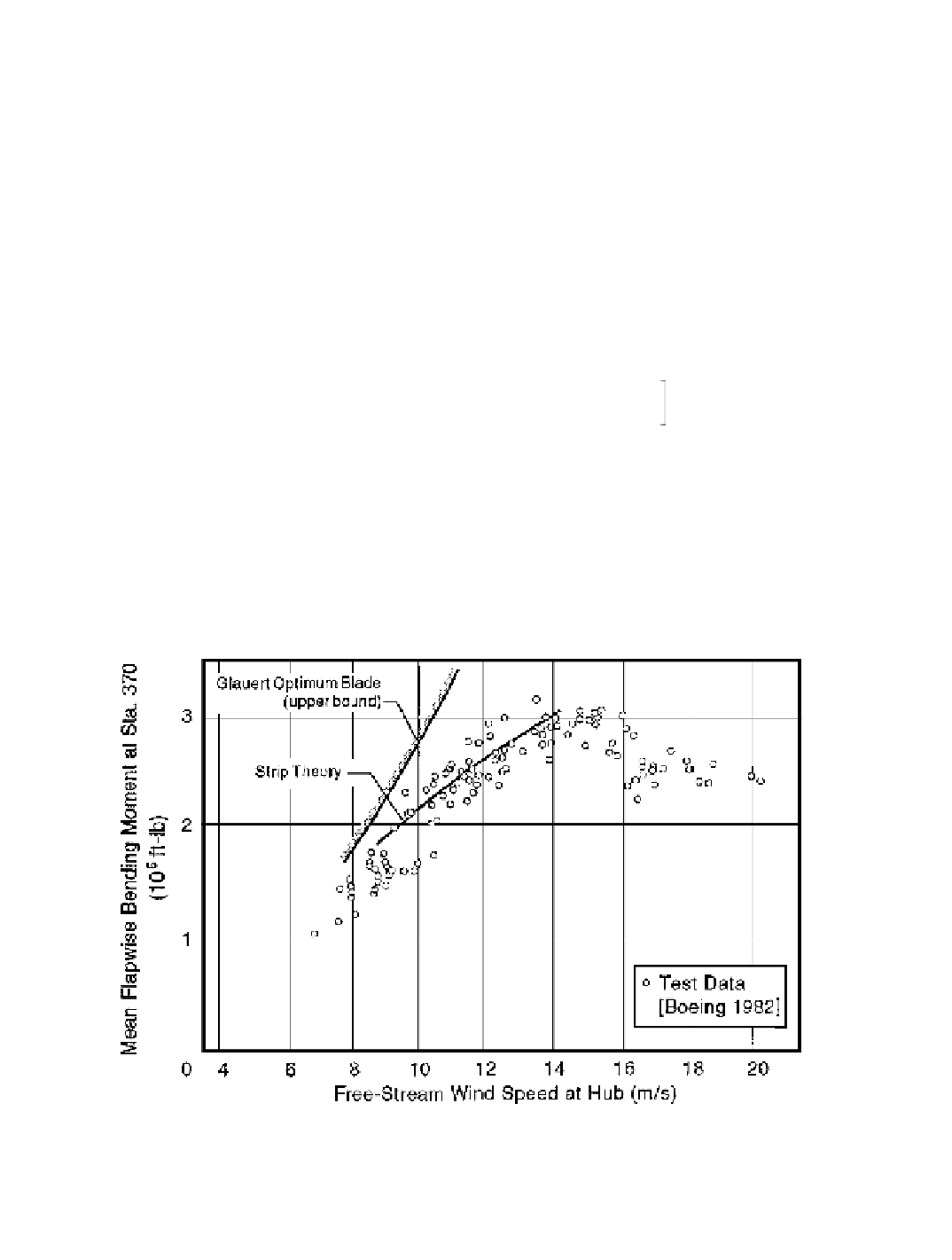Environmental Engineering Reference
In-Depth Information
appreciably from the optimum configuration. For the Glauert optimum rotor, the circulation
is constant along the blade, approaching the following value at higher tip-speed ratios:
U
2
B
W
G ®
8 p
9
(5-44)
The following axial and tangential air loadings are easily obtained from this circulation:
p
a
,
x
= 0.5 r
U
2
16 p
9
B
(5-45a)
r
32 p
27
B
W
1
-
3
r
W
2
U
C
D
C
L
p
a
,
y
= 0.5 r
U
3
(5-45b)
where
x
,
y
= subscripts designating axial and tangential air loadings, respectively
Drag has less effect on the axial loading, and Equation (5-45a) contains only the lift contribu-
tion. The aerodynamic flatwise bending moment on a Glauert optimum blade is
R
p
a
,
x
r dr
= 0.5 r
U
2
8 p
R
3
27
B
2 - 3
s
s
R
3
M
y
=
R
+
(5-46)
s
where
s
= blade station, measured from the rotor axis (m)
Again, Equations (5-45) are applicable only at higher tip-speed ratios and can be ex-
pected to overestimate air loadings on blades significantly different in shape from the Glauert
optimum configuration. Figure 5-30 illustrates the relative sizes of steady flatwise bending
moments measured on a Mod-2 HAWT blade [Boeing 1982], an upper bound calculated in
accordance with Equation (5-46) for tip-speed ratios greater than 10, and steady bending
loads predicted using strip theory. This blade design is far from the Glauert performance-
optimized configuration, and Equation (5-46) significantly overestimates the bending load.
Figure 5-30. Measured and calculated steady flatwise bending moments
vs
. free-stream
wind speed at 20 percent span in a Mod-2 HAWT blade.
















Search WWH ::

Custom Search